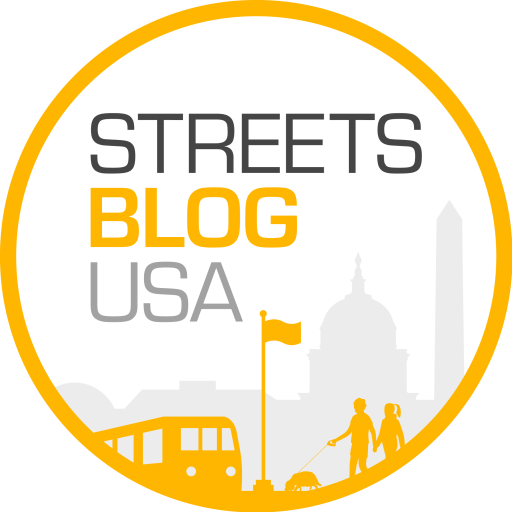Badusername
Active Member
- Joined
- Dec 2, 2021
- Messages
- 217
- Reaction score
- 643
Where are you seeing 2027?
New project website. There is a meeting on March 25.
Construction now scheduled to begin in 2027.
Project information
hwy.massdot.state.ma.us
Where are you seeing 2027?
New project website. There is a meeting on March 25.
Construction now scheduled to begin in 2027.
Project information
hwy.massdot.state.ma.us
Where are you seeing 2027?View attachment 60541

 usa.streetsblog.org
usa.streetsblog.org
Best guess:This is tangential to the thread, but I couldn't find a better place to ask something I've long wondered: why does the elevated northbound side briefly return to grade for a signalized intersection at Somerville Av/Poplar St, while the southbound side remains elevated entirely? Was is always this way? Because it seems counterintuitive to 1950's highway planning.

The NB didn't need to be elevated because up until relatively recently there was no traffic light on the NB direction of McGrath Hwy. This was the case for several decades after the elevated SB highway was built in the 1950s. Traffic heading NB from Medford St went into a roadway that ran underneath the SB elevated McGrath roadway from Somerville Ave all the way to Washington St, then that traffic joined McGrath Hwy NB morth of that intersection.This is tangential to the thread, but I couldn't find a better place to ask something I've long wondered: why does the elevated northbound side briefly return to grade for a signalized intersection at Somerville Av/Poplar St, while the southbound side remains elevated entirely? Was is always this way? Because it seems counterintuitive to 1950's highway planning.
The NB didn't need to be elevated because up until relatively recently there was no traffic light on the NB direction of McGrath Hwy. This was the case for several decades after the elevated SB highway was built in the 1950s. Traffic heading NB from Medford St went into a roadway that ran underneath the SB elevated McGrath roadway from Somerville Ave all the way to Washington St, then that traffic joined McGrath Hwy NB morth of that intersection.
Yes, on this 2007 Google streetview you can see the roadway (now gone) that ran underneath the SB overpass. It took NB Medford Street traffic to Washington Street, then to the NB McGrath Hwy.Oh, this actually makes sense. It took me a while to understand what you were describing, but I think I understand after looking at old mapjunction images. Thanks!
This would be amazing! Doubt we would see it done this way, but I like the way you're thinking. I do like that there's enough room for the current design to have a fully-protected intersection at least, but that's more of a silver lining imo.Work with a developer to use 1/2 the footprint to build apartments, 1/2 for a surface boulevard? Then we can get it for free.
Thanks Charlie!The NB didn't need to be elevated because up until relatively recently there was no traffic light on the NB direction of McGrath Hwy. This was the case for several decades after the elevated SB highway was built in the 1950s. Traffic heading NB from Medford St went into a roadway that ran underneath the SB elevated McGrath roadway from Somerville Ave all the way to Washington St, then that traffic joined McGrath Hwy NB morth of that intersection.
I (was) a highway designer, and also have followed expressway planning and design since I was a kid.Thanks Charlie!
Before the new signal, the weave from where the NB frontage road ends at Cross St to the left turn lanes at (the Northern) Medford St intersection must have been a complete mess; absolute sterling example of myopic 1950’s era highway design!
In that case, the original designers probably realized space limitations precluded NB Medford St traffic from entering NB McGrath until Cross St. In that case, displacing where NB Medford crossed under NB McGrath would allow an at grade NB McGrath to still operate conflict free. So why not save a few bucks on steel and make it easier to tie in Poplar St? (There are/were 101 other reasons to not do any of this, but the infinitely wise 1950’s highway engineers didn’t consider those).
I like it! An urban boulevard for the 21st century. I just hope the previously awarded Federal funding is still available.
Presentation from the meeting
That’s a guardrail by the looks of it and it’s only on the stretch where there is another road next to McGrath. Probably a safety feature to protect the small roads.So I never noticed this in the presentation but it was pointed out in the GSNC meeting yesterday, the barrier in the median is not something we’ve seen before. The neighborhood council could not get confirmation from MassDOT or Rep Connolly as to the nature of the barrier. Could be an 8ft chain link fence or a highway median crash barrier. Either option is counterproductive to the mission of connecting the community.View attachment 61713
If planned vehicle speeds are high enough to require a guard rail for feeder streets, we are leaving a lot to be desired with this design. It doesn’t seem logical to protect the frontage road while leaving only the curb for the cycle lane on the other side. The impression from the neighborhood meeting was that it is potentially a fence to prevent jaywalking.That’s a guardrail by the looks of it and it’s only on the stretch where there is another road next to McGrath. Probably a safety feature to protect the small roads.
